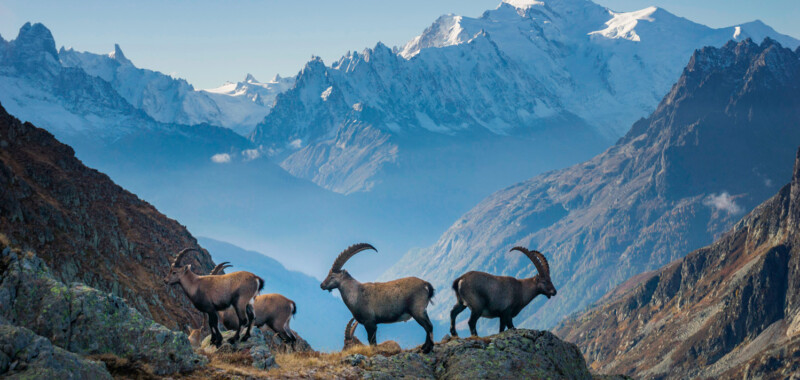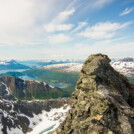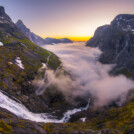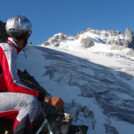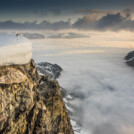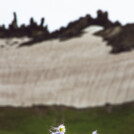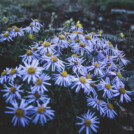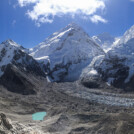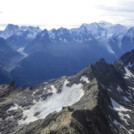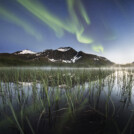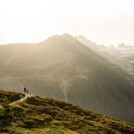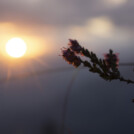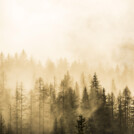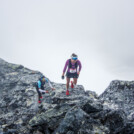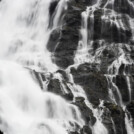Kilian Jornet is a trail running legend and one of the greatest athletes the sport has ever seen. After winning just about everything, he returned to his personal roots. Born and raised in the Pyrenees, he started his own foundation in 2020 to protect our mountains and nature. We asked: What can the foundation do, what can we all do to make our sport sustainable? And how can we not only protect nature, but also help it to regenerate? An interview with the Kilian Jornet Foundation.
2023 was the first year the Kilian Jornet Foundation (KFJ) was up and running. What was the most magical moment in the foundation’s short history?
Laura Viñals: The Foundation was established in 2020. One of the main reasons why Kilian Jornet started this project was because he directly felt, saw and experienced the impact that climate change is having in our environment and in our mountains.
In 2020, the Foundation faced the challenges posed by the pandemic, but over the following years, we dedicated ourselves to the development of various projects, pivoting within our three main pillars; education, research, and direct actions, culminating in their consolidation in 2023.
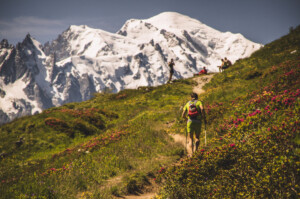
2023 proved to be a pivotal year for us as we achieved stability in both project volume and objectives accomplished. One of the highlights and more special moments for the Foundation during this time was our ability to personally connect for the first time with our target audience through the activation of specific events. Presently, we are deeply engaged in the development of numerous projects aimed at understanding the needs and preferences of our audience, particularly those who share a passion for nature and mountain sports, and are committed to enhancing environmental sustainability.
Your goal is “to work towards a durable, solid and long-lasting cooperative engagement and collective action in order to preserve mountain environments.” That’s quite a big goal. To reach it you “believe that community strength and small steps lead towards bigger transitions”. What are your central demands to the trailrunning community in general – runners as well as event organizers?
Laura: From the Foundation, we strive to be a knowledge hub where nature enthusiasts, particularly the trailrunning community, can learn how to enhance their relationship with the environment and reduce the environmental impact of this sport. With this goal in mind, one of our key projects was born: The Athlete Climate Academy. It’s a podcast where Kilian Jornet interviews various outdoor athletes, discussing how we, as athletes, can have a positive impact on the environment from a sports perspective and advocate for climate change-related topics.
There are many small things we can do as athletes and as race organizers, and we wanted to compile them in the Outdoor Friendly Pledge, aimed precisely at stakeholders in this sector. Within the pledge, we work on various toolkits, providing ideas and recommendations for reducing our environmental impact. Some alternatives are proposed to reduce our impact on the environment and to develop both athletes and sporting events more sustainably. To highlight one of each:
- We emphasize in the athlete’s section that the athlete’s biggest environmental footprint comes from traveling, making it one of the main areas we can adjust and improve.
- In the case of trail events and races, environmental, social, and economic aspects must be considered to make the race as sustainable as possible.
Let’s address the individual level and the aspect of knowledge a bit more: What are the 3 most important facts about ecological sustainability you want individual trailrunners to know?
Gerard Vila: As a foundation, we are lucky to have a person like Kilian in front of us. He is a powerful speaker that can be heard from a range of profiles. This is, without a doubt, a great responsibility. For this reason, I would tell you that from the foundation, we would like to be able to influence the trail running community from 3 approaches:
- We want trailrunners to increase their knowledge of the environment where they practice this sport. From the habitats and ecosystems where they usually run to the natural processes on a planet scale. What climate change is, how it affects us and will affect us. You don’t need to be an expert but to have enough knowledge to know that there are fragile natural balances which we have to take care of.
- Practitioners need to learn about what impact we can make on nature derived from our activity. How can we practice trail running in a more respectful way for nature?
- We want to support them gain awareness for and value nature as our most important asset and to believe in the importance of investing to restore and preserve it.
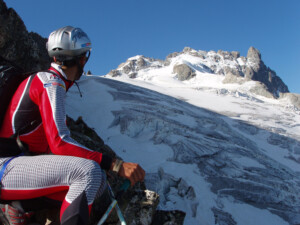
These are the three priorities which we want to reach within this increasing community
„While this vision should be carried in a global scale we believe that community strength and small steps lead towards bigger transitions and that’s the aim this foundation was born for, to work on preserving one of the biggest natural spaces towards a better future for all the inhabitants of earth.”
Kilian Jornet in the “2024 Projects Report”
And what are the 3 most important steps everyone can actually do on their own to minimize the ecological footprint and thus to contribute to a net zero emission society?
Gerard: Being interested in where the products we buy come from and if there is an ecologically and socially fair chain behind these products is a key step we can take. From here, our impact, which will always be there, can be more positive.
Many tips can be listed to reduce our carbon footprint, but at the end of the day, the most important thing is to be aware of our impact and be responsible consumers.
We have developed an app called Outdoor Footprint to make it easier for outdoor practitioners to place their annual carbon footprint, taking into account sports equipment as well as transportation and food, among others. The app also offers tips to reduce the footprint and the possibility of offsetting the carbon emitted with other platforms.
Still, three concrete steps for everybody are:
- Calculate your carbon footprint and know what it represents.
- Reverse certain consumption habits, such as transportation or food to reduce your carbon footprint.
- Appropriate conservation platforms. Working locally at this scale is very important for the preservation of biodiversity and reversing impacts in action.
Coming back to the bigger picture: The sports industry has a terrible reputation when it comes to sustainability. There are accusations of greenwashing, of productions that are not even catering to a single dimension of sustainability (ecologic / economic / social). How can this strong lever be changed for the better?
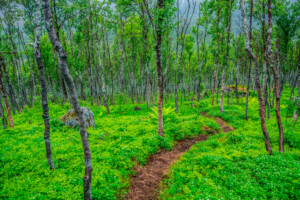
Laura: The sports industry, especially in the outdoor sector, plays a fundamental role in promoting sustainability values, particularly concerning environmental conservation.
The sports sector has experienced significant growth in recent years, with professionalization in various areas and increased participation and investment from various sponsors. This boom has led to practices that are not always responsible from a sustainability perspective, in all its aspects.
Still, outdoor sports enthusiasts show greater concern for these issues. Therefore, they play a crucial role in deciding which brands to support, which events to participate in, and which products to consume. It is essential for us as consumers to be aware of our decisions and choose options that are more aligned with sustainability in its three dimensions: social, economic, and environmental. In this way, we can drive significant change towards more responsible and sustainable practices for the future.
Several studies have shown that the community dedicated to outdoor sports is notably more committed to preserving the environment and willing to take measures to improve its relationship with nature preservation.
Your impact logic is based on three pillars of activity: research / education / direct action. How do you assess your impact – next to measuring the output level of e.g. how many people watch your videos and visit your website?
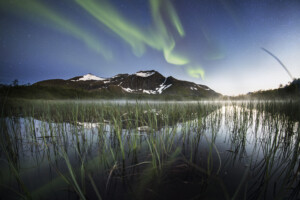
Laura: We have diverse methodologies to measure our impact. On one hand, there’s the impact generated within our community through the communications we conduct via our social media channels. This communication revolves around our projects, allowing us to add numbers to various project-specific KPI (Key Performance Indicators).
In the block of education, our KPIs predominantly focus on our reach to educational institutions and student involvement. We also evaluate the success of events hosted within this domain, with attendance figures serving as a primary KPI.
Within our research projects, impact metrics are tailored to project objectives, invariably intertwining with the scientific principles of such initiatives. This often involves projects delving into the ramifications of climate change on mountainous regions, for instance.
Finally, for projects involving direct actions, we develop bespoke indicators. For example, in our clean-up campaigns, we measure metrics like kilograms of waste collected across various categories and the number of volunteers engaged. Furthermore, this block encompasses endeavors aimed at fostering more sustainable options, with respective outputs aligned to each project’s objectives.
The Kilian Jornet Foundation is still a very young foundation. How does it get its funding?
Laura: We are still in the early stages of our journey. To secure funding for our Foundation, we have three primary sources. Firstly, we rely on individual donations from supporters who believe in our cause. Secondly, we receive support from partners, primarily businesses and other entities, through initiatives like 1% For the Planet. This enables us to initiate and execute new projects. Thirdly, we obtain public funding from local or European administrations. This funding allows us to undertake projects that have been meticulously planned and presented for consideration, all of which are aligned with our overarching mission.
One of our significant projects slated for the next two years is the Green Trail Concept. This initiative, co-financed by the European Union, aims to develop a sustainability certification for trail running races.
Laura Viñals is Communications Manager at the Kilian Jornet Foundation.
Gerard Vila is Project Manager at the Kilian Jornet Foundation and a Forestry Engineer.
